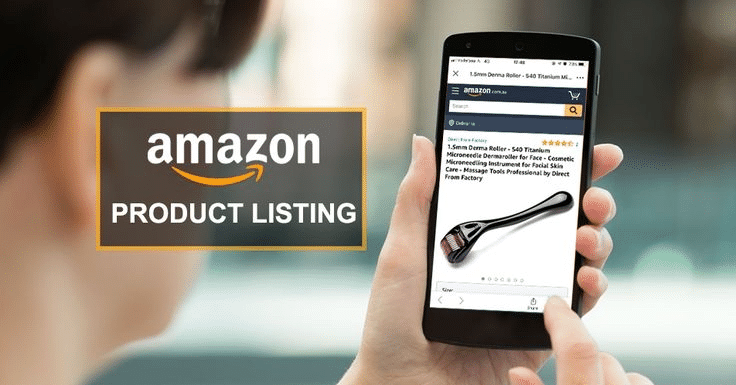Launching your first product on Amazon is an exciting opportunity, but success starts long before your listing goes live.
Every decision—from selecting a reliable manufacturer to optimizing your product listing and marketing strategy—affects your ability to stand out, attract buyers, and generate sales. Early missteps like poor quality control or production delays can lead to stockouts, negative reviews, and lost momentum, making it critical to get manufacturing right from the start.
From selecting the right supplier to ensuring compliance with Amazon’s standards, this guide will dive into the critical manufacturing decisions that influence how successful your product is in the marketplace. By establishing a strong foundation, you’ll be well-prepared to tackle the challenges of your first Amazon product launch and position yourself for long-term success.
Key Takeaways
- Choosing the right manufacturer and ensuring high-quality production is key to your product’s success. Unreliable suppliers and poor quality control can lead to negative reviews and lost sales, making it essential to thoroughly vet manufacturers before starting production.
- Market research and pricing strategy play a crucial role in staying competitive on Amazon. By analyzing trends, studying competitors, and validating demand, you can ensure your product stands out while remaining profitable.
- Inventory planning and fulfillment strategies are essential for avoiding costly stockouts. By balancing order quantities, forecasting demand accurately, and ensuring timely production, you can maintain consistent product availability.
- Crafting an effective launch and marketing strategy boosts visibility and increases sales. Optimizing product listings, running targeted PPC campaigns, and leveraging external traffic sources all work together to attract buyers and build momentum in Amazon’s marketplace.
How Market Research Contributes to a Successful Launch
Successful Amazon sellers don’t leave product selection to chance—they rely on thorough market research and data-driven insights to validate their ideas before committing to manufacturing. Analyzing current market trends helps identify gaps, assess demand, and evaluate whether a product is likely to succeed. Launching at the right time—when demand is high and competition is manageable—can significantly improve visibility and sales momentum.
Consumer Preferences Drive Demand
Amazon Best Seller lists, social media trends, and historical sales data offer valuable insights into consumer preferences. Understanding your target audience—what they search for, what they buy, and what problems they struggle with—allows you to align your product with demand. Tools like Jungle Scout, Helium 10, and other keyword-research platforms can help pinpoint relevant keywords and trending product categories, ensuring your launch strategy is built on data rather than assumptions.
Analyze Your Competition
Competitive research is equally important. Studying top-performing listings, customer reviews and competitor pricing strategies can help you identify ways to differentiate your product. If a vertical is oversaturated with identical products, adding unique features, improving product quality, or offering better packaging can set you apart. Additionally, analyzing price points and factoring in Amazon’s fees ensures your product remains competitive and profitable.
Launch Success is Heavily Influenced by Your Choice of Supplier and Product Refinement
Domestic vs. Overseas Suppliers: Weighing the Pros and Cons
Choosing the right manufacturing partner is one of the most important decisions related to launching your first product on Amazon: Do you work with domestic or overseas suppliers? Domestic suppliers offer advantages like shorter shipping times, smoother communication channels that aren’t as impacted by language barriers or time zone delays, and fewer complications related to import regulations or tariffs. These factors can streamline quality control and reduce logistical complications, making them a strong choice for products that require strict regulatory compliance or premium positioning. However, domestic production often comes with higher manufacturing costs and more limited supplier options, which can impact profit margins.

On the other hand, overseas suppliers—particularly those in manufacturing hubs like China, Vietnam, and India—generally offer lower production costs, making it easier to maintain competitive pricing on Amazon. These suppliers often excel in high-volume production, which can be a key advantage when scaling your business quickly.
However, the trade-off is that longer lead times, potential language barriers, and quality control issues may require more diligent oversight to ensure timely delivery and product consistency. Choosing an overseas partner requires thorough vetting, strong communication processes, and contingency plans to handle possible disruptions.
Why Prototyping and Product Validation Are Essential Before Full-Scale Production
Before committing to full-scale production, first-time sellers should invest in prototyping and product validation. A prototype helps identify potential design flaws and assess the quality of materials and product specifications before manufacturing at scale. This step minimizes costly mistakes and ensures that the final product meets customer expectations. Product validation through test markets, sample reviews, or limited pre-orders can also provide early feedback to confirm demand before placing a large order.
Production Planning, Inventory Management, and Quality Control: Setting the Stage for a Strong Launch
Every step in the manufacturing and supply chain process plays a role in the success of your first Amazon product. Production delays, poor inventory planning, or quality control failures can lead to stockouts, negative reviews, and wasted investment. A well-structured approach to manufacturing timelines, inventory management, and compliance ensures a smooth product launch and protects your brand’s reputation.
Aligning Manufacturing Timelines with Your Launch Strategy
Manufacturing lead times directly impact your ability to launch on schedule. Whether you choose a domestic or overseas supplier, understanding standard production timelines is crucial. Overseas manufacturing typically requires longer lead times due to shipping and customs clearance, while domestic production may offer faster turnaround but at a higher cost.
To minimize unexpected delays, factor in quality control checks, production buffers, and shipping lead times. Working with reliable suppliers who have a proven track record of meeting deadlines is critical, as is planning around peak manufacturing seasons and major holidays that could disrupt production schedules.
Balancing Minimum Order Quantities and Inventory Risk
For new sellers, managing inventory is a delicate dance. Many manufacturers require minimum order quantities (MOQs), which can impact cash flow and storage costs. While higher MOQs often result in lower per-unit costs, they also increase the risk of overstocking if your product doesn’t sell as expected.

Conversely, ordering too little can lead to stockouts, which not only hurt sales but also impact your product’s visibility on Amazon due to its ranking algorithms. Running out of inventory during a launch can significantly slow momentum, making it essential to forecast demand accurately and set realistic order volumes.
Ensuring Quality Control and Compliance from the Start
Product defects or quality issues can result in higher return rates and negative reviews, damaging your reputation before your brand even has a chance to gain traction on the market. To prevent this, factory audits and pre-shipment inspections should be non-negotiable steps in your process. A quality control plan that includes regular checks at different stages of production ensures that defects are caught before they reach customers.
Additionally, compliance with Amazon’s requirements—such as packaging regulations, safety certifications, and labeling guidelines—is essential to avoid listing removals or penalties. Packaging is also vital for customer satisfaction. A thoughtful, damage-resistant unboxing experience can lead to better reviews and encourage repeat purchases.
Monitoring and Replenishment
Regularly tracking inventory levels on Amazon is critical to avoid stockouts and ensure sufficient supply meets customer demand. Monitoring inventory levels allows you to respond quickly to changes in demand and restock as needed.
Offering discount codes can serve as an effective strategy to encourage positive reviews and increase sales when inventory is low. This approach can help maintain sales momentum while managing inventory levels.
Optimizing Your Product Listing for Maximum Visibility and Sales
Strong product listings improve search rankings, attract buyers, and drive conversions. Key elements—such as the product title, description, bullet points (which highlight key features and benefits), and images—must be strategically crafted to showcase your product’s advantages and distinguish it from competitors.

Beyond basic listing optimization, conducting keyword research and analyzing competitor strategies can help position your product effectively within Amazon’s marketplace. By refining content copy and associated visuals, you increase the likelihood of standing out in search results and converting browsers into buyers.
Mastering Keyword Research for Product Visibility
Selecting the most relevant keywords ensures your product reaches the right audience. Tools like Jungle Scout, Helium 10, and Amazon’s own keyword tool help identify specific keywords with high search volume and low competition.
Rather than relying solely on broad terms, incorporating long-tail keywords within your product title, bullet points, and A+ content can help improve search rankings and drive sales. A+ content allows you to enhance your product listings with more detailed images, additional descriptions, and comparison charts, providing a richer shopping experience. Reviewing competitor listings also gives insight into which keywords are driving traffic and where you can differentiate your product.
Crafting Effective Titles and Bullet Points
Your product title should clearly describe your item and include the most relevant keywords, without feeling forced. Make sure to mention key details like the brand name, main features, and unique selling points, but keep it brief and to the point.
Use bullet points to emphasize the product’s benefits. Instead of simply listing features, explain how each one addresses customer needs or makes their life easier. Incorporating keywords into the bullet points helps improve visibility while keeping the copy easy to read and engaging.
Enhancing Product Listings with High-Quality Images
High-resolution images are crucial for driving conversions on Amazon. Your product images should clearly showcase multiple angles, close-up details, and lifestyle shots to help customers understand the product’s features and how it fits into their lives. Ensure images are at least 1,000 pixels on the longest side to enable the zoom function, allowing customers to closely inspect product details. These images should align with Amazon’s guidelines, including having a clean, white background for the main image and showcasing the product from various perspectives.
In addition to standard product photos, consider using infographics to highlight key features, dimensions, or usage instructions. Lifestyle images, where the product is shown in use or within a relevant setting, also help customers visualize how it fits into their lifestyle. All images should be clear, professionally shot, and free of clutter, adhering to Amazon’s strict image standards to ensure a smooth and trustworthy shopping experience.
Pricing for Success: Maximizing Value and Profitability
Setting the right price for your Amazon product is key to staying competitive and maintaining healthy margins. You need to account for all costs—like production, shipping, and Amazon’s fees—while also considering what customers are willing to pay. Your pricing should balance covering expenses with generating profit while positioning your product effectively within the marketplace.
Building a Pricing Strategy that Drives Sales
A solid pricing approach begins with a clear understanding of your costs and desired profit. While setting low prices can boost sales in the short term, it might diminish your product’s perceived value, leading to fewer conversions. On the other hand, overpricing without enough differentiation can deter potential buyers. The goal is to find a sweet spot that appeals to customers, showcases your product’s value, and ensures long-term success.

Initial Pricing Strategy for a Strong Launch
For newly launched products, pricing competitively can encourage initial sales and generate positive reviews, which are critical for ranking in Amazon’s search results. A staggered pricing approach, where you start with a lower introductory price and gradually increase it as reviews and demand grow, helps build sales velocity while maintaining profitability. Offering limited-time discounts or bundled deals can also help attract buyers and establish early momentum.
Optimizing Prices Over Time
Once your product gains traction, implementing gradual price adjustments ensures that you remain competitive while maximizing revenue. Monitoring sales performance, customer demand, and market trends allows for strategic adjustments that prevent sudden price shifts, which could negatively impact customer satisfaction or disrupt sales momentum. Continuous analysis of competitor pricing and Amazon PPC campaigns helps fine-tune your pricing strategy for long-term success.
Marketing & Launch Tactics for a Successful Amazon Debut
A successful Amazon product launch hinges on the right balance of promotion timing and inventory readiness. It’s crucial to ensure that your product is available when customers are ready to purchase, as stockouts during this critical period can hurt visibility and sales momentum. Additionally, early reviews play a key role in driving initial sales velocity and boosting your product’s credibility on Amazon.
Timing Promotions is Key to Visibility
Running targeted promotions and discounts in the early stages can dramatically increase the visibility of your product. Temporary price reductions or bundled deals attract more buyers and create a sense of urgency, especially when combined with sponsored products or sponsored brand campaigns. These campaigns amplify your product’s exposure and help you build momentum quickly, while effective promotional tools drive initial traffic and sales.
Building Early Reviews for a Strong Start
Securing early reviews is crucial for building trust and credibility with potential buyers, especially for a new product launch. Positive feedback from early customers can significantly influence purchase decisions and improve your product’s visibility in Amazon’s search rankings.
To encourage early reviews, focus on delivering a high-quality product that meets customer expectations. You can also utilize Amazon’s “Request a Review” button in your seller account, which automatically sends a review request to customers who’ve purchased your product. Additionally, programs like Amazon Vine (for enrolled sellers) allow you to provide your product to trusted reviewers in exchange for their honest feedback, helping to build initial momentum.

Responding to Reviews
Engaging with customers who leave reviews—whether positive or negative—shows that you value feedback and are committed to delivering a great product. Responding thoughtfully to negative reviews can build trust with customers and demonstrate your dedication to resolving issues, while positive reviews can be amplified by thanking customers for their feedback.
Leveraging Amazon PPC Campaigns
Amazon PPC campaigns are essential for enhancing visibility in Amazon’s competitive marketplace. Sponsored products and sponsored brand campaigns allow you to target specific keywords, ensuring your product reaches the right audience. Automating your PPC strategy ensures better keyword targeting, with intelligent bid adjustments to optimize return on ad spend.
Driving External Traffic to Boost Visibility
While Amazon’s internal advertising tools are powerful, external traffic plays an equally important role. Partnering with influencers and leveraging social media, email marketing, and content marketing can drive organic traffic to your product listings. This creates a buzz, attracting a wider audience and bolstering your product’s performance within Amazon’s search algorithms. Engaging relevant communities and providing clear calls to action encourages potential buyers to visit your page and convert.
Post-Launch Success: Fine-Tuning Your Strategy for Continuous Growth
Post-launch optimization is essential for taking your product to the next level and ensuring sustained success. By continuously analyzing key metrics and adjusting your strategies, you can maximize performance and scale your product’s presence on Amazon.
Scaling with Data-Driven Decisions
Using performance data to drive decisions is crucial for scaling your business. Metrics like conversion rates, sales velocity, and advertising ROI help identify what is working and what needs improvement. As you collect more data, refine your PPC campaigns, inventory management strategies, and promotional efforts. This insight helps ensure that you remain competitive and agile in the face of changing market conditions.
For example, inventory management should adapt based on sales trends. If you’re seeing higher-than-expected demand, it’s time to scale inventory to avoid stockouts and prevent missed sales opportunities. Similarly, if your ads are performing well in certain segments, consider increasing the budget to boost visibility.

Adjusting Strategies by Measuring Performance
Regular analysis of your sales performance will help you fine-tune your strategy over time. Reviewing advertising performance, sales velocity, and conversion data allows you to optimize your pricing and marketing campaigns.
Keyword optimization is key here. Regularly monitor the performance of keywords, adjusting bids and adding new, relevant keywords as your product grows in popularity. Also, consider seasonal trends and consumer behavior shifts, which may affect your approach.
Responding to Customer Feedback and Refining Your Product
Customer feedback continues to play a critical role in post-launch optimization. Actively monitor and respond to reviews to show customers that you value their input. This level of engagement enhances your reputation and improves your overall customer satisfaction.
As you receive feedback, consider making adjustments to your product, packaging, or even marketing approach. If customers consistently request a feature or mention a specific pain point, addressing it proactively can lead to more positive reviews, better rankings, and stronger customer loyalty.
Continuous Improvement and Long-Term Success
Achieving long-term success on Amazon involves continuous improvement. Regularly assess your data, adjust your strategies, and keep innovating to stay ahead of competitors. By fostering a culture of adaptation and optimization, you ensure your product not only thrives at launch but continues to perform well over time.
Building a Strong Foundation for Your First Amazon Product Launch
The key to a successful Amazon product launch lies in making informed, strategic decisions throughout your product’s journey. From selecting reliable suppliers and maintaining quality control to planning inventory and executing a targeted marketing strategy, every step you take ensures a smooth path toward growth. Aligning your manufacturing and marketing goals from the start will help you navigate common obstacles like production delays and stockouts.
As you scale, focus on consistency and adaptability to maintain a competitive edge. By leveraging data and refining your approach, you can enhance customer satisfaction and drive long-term success. Prioritizing product quality and staying responsive to market trends will establish your brand’s reputation and lay the groundwork for lasting growth on Amazon.
Frequently Asked Questions
How much inventory should I order for my first Amazon product?
You should use Amazon’s Forecasting Tool to estimate your expected sales volume for your first product. This will help you order the right amount and avoid running out of stock.
Should I manufacture domestically or overseas for my Amazon launch?
Choosing between domestic and overseas manufacturing depends on your priorities. If you value quicker lead times and easier communication, go domestic; if cost savings are your main focus, then overseas might be the way to go.
What quality control steps should I take before shipping inventory to Amazon?
Make sure to conduct thorough factory audits and pre-shipment inspections to catch any defects and confirm that your products meet Amazon’s standards. This will help you avoid potential problems and ensure a smooth shipping process.
How do I avoid running out of stock too early?
To avoid running out of stock too early, focus on accurate demand forecasting and keep a close eye on your inventory levels. By restocking ahead of time, you’ll be better prepared to meet customer demand.
What’s the best way to manage cash flow while paying for manufacturing upfront?
To manage cash flow while paying for manufacturing upfront, strike a balance between minimum order quantities and your cash flow risk. This way, you can minimize costs without overcommitting to inventory that may not sell.



